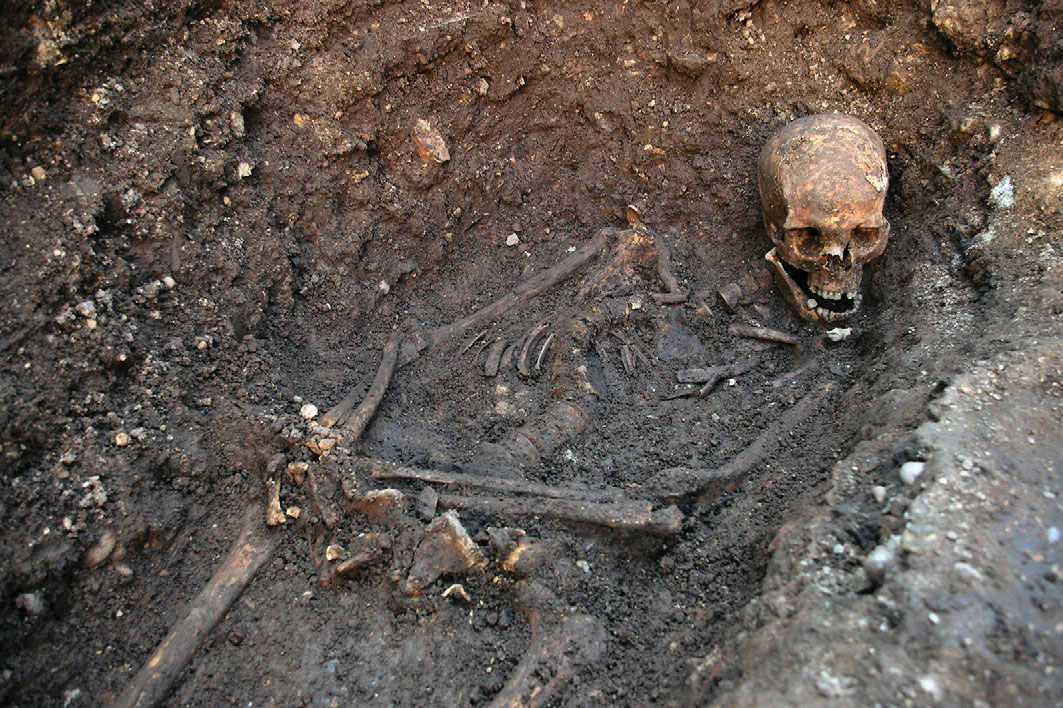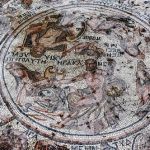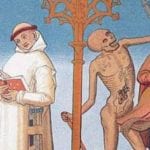 Weird Stuff
Weird Stuff  Weird Stuff
Weird Stuff  Books
Books 10 Pen Names More Famous Than Their Authors
 Creepy
Creepy 10 Unnerving Legends from Around the World
 Movies and TV
Movies and TV 10 Amazing Lead Actor Ideas for Superhero Movies
 Our World
Our World 10 Crazy Facts about Cycads That Might Surprise You
 Technology
Technology 10 World-Changing Examples of Turning Dumb Technology into Smart Technology
 Pop Culture
Pop Culture Ten Celebrities Who Straight-Up Lied on Home Tours
 Animals
Animals 10 Remarkable Things We’ve Recently Learned about Animals
 Weird Stuff
Weird Stuff 10 Reasons the Psychic Internet Theory Will Blow Your Mind
 Movies and TV
Movies and TV Television’s Top Ten Most Ruthless Serial Killers
 Weird Stuff
Weird Stuff 10 Things That Would Have Killed You in the Old West
 Books
Books 10 Pen Names More Famous Than Their Authors
 Creepy
Creepy 10 Unnerving Legends from Around the World
Who's Behind Listverse?

Jamie Frater
Head Editor
Jamie founded Listverse due to an insatiable desire to share fascinating, obscure, and bizarre facts. He has been a guest speaker on numerous national radio and television stations and is a five time published author.
More About Us Movies and TV
Movies and TV 10 Amazing Lead Actor Ideas for Superhero Movies
 Our World
Our World 10 Crazy Facts about Cycads That Might Surprise You
 Technology
Technology 10 World-Changing Examples of Turning Dumb Technology into Smart Technology
 Pop Culture
Pop Culture Ten Celebrities Who Straight-Up Lied on Home Tours
 Animals
Animals 10 Remarkable Things We’ve Recently Learned about Animals
 Weird Stuff
Weird Stuff 10 Reasons the Psychic Internet Theory Will Blow Your Mind
 Movies and TV
Movies and TV Television’s Top Ten Most Ruthless Serial Killers
10 Incredible Facts Revealed by King Richard III’s Skeleton
It’s hard to think of a monarch who has inspired as much heated debate as King Richard III of England. Was he an evil pantomime villain? Or a misunderstood peacekeeper? He spent the first 30 years of his life playing the loyal brother to King Edward IV, maintaining order and upholding justice in the north of the country.
Then, on Edward’s death in 1483, he apparently underwent a complete personality change. He’d been trusted by his brother to act as Lord Protector and make sure the heir, Prince Edward, was placed safely on the throne. Instead, Richard declared the heir illegitimate, chased the widowed queen into hiding, and imprisoned both of his nephews in the Tower of London. He then promptly proclaimed himself King of England. The two boys were never seen again.
His triumph didn’t last long, though. Soon after Richard’s coronation, his son and heir, Edward of Middleham, died at the age of 10 from an unknown illness. A short while later, his wife, Ann Neville, died of presumed tuberculosis. Richard himself died at the Battle of Bosworth in 1485, just two years after becoming king, while fighting desperately to defend his crown. He was beaten by a distant relative named Henry Tudor—and a new era was ushered in.
In a strange postscript to a bizarre and short-lived reign, Richard’s skeleton was discovered under a parking lot in the English city of Leicester in 2012. Until then, his final resting place had been a mystery, and many experts had given up hope that he would ever be found. Richard’s skeleton was carefully excavated, and his remains were studied. He now lies in state at Leicester Cathedral. A visitor’s center has been set up over the site where his remains were discovered, and the actual spot where his body lay for over 500 years can be viewed through a glass floor.
Using modern isotopic techniques and DNA analysis, scientists have been able to learn a lot about Richard’s life and the manner of his death from his skeleton. And the results—like everything surrounding Richard III—are absolutely fascinating.
Related: 10 Royal Mysteries Solved by Science
10 Is It Really Richard’s Skeleton?
There is a 99.999% chance that the skeleton belongs to Richard. We know this because scientists tirelessly worked to sequence the mitochondrial DNA from the bones and match it with two living relatives, Wendy Duldig and Michael Ibsen. Richard’s son didn’t survive to reproduce, so they traced the line all the way down from Richard’s sister, Anne of York, to descendants alive today.
Other information gleaned from the skeleton supports this conclusion. Forensic analysis of the bone joints suggests that the skeleton belonged to an adult male aged 30–34. As Richard died at the age of 32, this would fit.[1]
9 Taken to Grey Friars after Death
Throughout the centuries, there have been theories about what might have happened to Richard’s remains after the Battle of Bosworth. The most famous emerged in 1611 when the Chronicler John Speed published an account in which he described a mob of Leicestershire locals seizing Richard’s skeleton and tossing it off Bow Bridge into the River Soar. As a result of this (untrue) account, many believed Richard’s remains were lost forever.
We now know that Richard’s body was carried from Bosworth Field to Leicester after his death and laid to rest in the Grey Friars Church. It was the foundation of the church that archaeologists—working in conjunction with Leicester City Council, the University of Leicester, and the Richard III Society—were trying to uncover. They were working on a hunch that the deposed king might have been taken there after the battle and buried in the crypt. They were a mere six hours into the two-week dig when they found Richard![2]
8 No Withered Arm
In his famous play Richard III, Shakespeare described the king as having several birth defects, including a hunchback and a withered arm. Richard is portrayed as a treacherous and backstabbing usurper, taking joy in the misery of others and declaring himself a proud “villain” to the audience within the first few lines of the play.
Analysis of the skeleton shows that Richard’s arms had developed normally and were of equal length. This eagerness to cast Richard in the role of pantomime villain was probably due to the audience Shakespeare was writing for—after all, Shakespeare lived during the Tudor era, and Queen Elizabeth was the grandchild of the man who had deposed Richard and taken his crown. A play that praised Richard or presented him in a positive light would not have gone down very well![1]
7 Stricken with Scoliosis
An examination of Richard’s spine confirms that he did, in fact, suffer from severe scoliosis, which would have resulted in uneven shoulders (his right shoulder would have been higher than his left shoulder). This matches accounts written by his contemporaries during his lifetime.
It doesn’t seem to have hampered his ability to fight, though, and he won many battles on behalf of his brother during Edward IV’s reign.[4]
6 Above Average Height
Richard’s skeleton shows that he was 5ft 8in (173 centimeters) tall, which was above average for the time. However, scientists believe that the effect of the scoliosis on Richard’s spine would have made him appear quite a lot shorter than this.
Also, Richard’s portraits often don’t truly portray the man. He is shown as an older king who looks little like the young man he was. Richard was only 32 at his death, and a new facial reconstruction from his skull was revealed to show a more accurate picture.[5]
5 His Feet Were Missing

Don’t worry—his feet were still attached to him during his lifetime! They had been separated from the rest of his body at some point during the 500 years he lay in the earth. His skeleton was also missing a leg bone. This isn’t particularly unusual for very old remains. In fact, scientists were surprised that the skeleton was so complete!
He probably lost his feet and the missing leg bone during the Victorian era, when an outhouse was built directly above his resting place. Luckily, the rest of the skeleton was left intact for us to examine. Phew![6]
4 Multiple Injuries at Death
Medieval battles were tough, unforgiving, and super gory. With no guns to give you the advantage and a limited choice of long-range weapons, combatants were forced to get up close and personal—stabbing, clobbering, and grappling their opponents into submission. Scientists counted eleven wounds on Richard’s body, including blows to his face and ribs, which were severe enough to impact the bones.
We know that Richard received these wounds on or around the time of his death because they hadn’t begun to heal. It’s likely that there were other, more superficial wounds that we can’t see evidence of.[7]
3 Killed by Blow to Head?
Richard’s skull shows evidence of three very serious injuries sustained on the battlefield. One is a small hole to the side of his head, which may have been caused by a long, thin dagger. The other two are larger wounds at the back and base of the skull and would have been caused by something larger, like an axe or a sword. Both larger wounds could have been fatal, and either could have caused his death.[8]
2 Stabbed in the Butt

Scientists have identified a mark on Richard’s pelvic bone, which suggests he may have been stabbed in the backside by a sword around the time of his death. Since he would have been wearing heavy armor during the battle, historians think that this wound was probably inflicted after Richard had been killed and stripped of his clothing.
It’s likely the act was symbolic, and it may have been inflicted on his bottom instead of his face to ensure that he would still be recognizable to his supporters when his dead body was paraded around the streets.[9]
1 Change in His Diet
Using isotopic analysis, scientists can tell an incredible amount about Richard’s diet. They know he ate a lot of fish—typical of a high-status individual at the time. Amazingly, they can tell from studying his tooth enamel that he spent his early childhood in the east of England (he was born in Northamptonshire) but that he had moved to the west of the country by the age of seven. They can also see that his wine consumption increased dramatically in the final years of his life, along with the luxuriousness of his food, and this tallies with his ascension to the throne.[10]








